My Mellow Rhythm in Assam
Today I would like to share my experiences mainly about lower Assam. You all know that Assam is a state among the seven sisters of northeast India. It is also called a ‘Hub’ for every other northeast state. Assam state is known for its wildlife, archeological sites, and tea plantations. In the west (lower Assam), Guwahati, the largest city, features silk bazaars and the hilltop Kamakhya Temple. Umananda Temple sits on Peacock Island in the Brahmaputra River. The state capital, Dispur, is a suburb of Guwahati. It is one of my favorite places to flaunt around not just because it’s familiar and native to my place but for its rich culture and beauty.
“I would rather own a little and see the world, than own the world and see a little of it.” Alexander Sattler
My every visit to Assam, mainly in Guwahati and the Dispur region, is always been so wonderful and pleasant. I would rather say: “Every visit gave me different experiences and wonderful memories.” To know and understand any culture of any state, we need to feel the importance of every glimpse related to the state. I think that what can be better than food to start with is to understand the culture. So, let’s start with cuisine…
Cuisine of Assam:
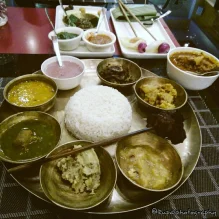
I am very lucky enough to have an Assamese friend who made me hop into a beautiful cuisine and described the dishes, but I hardly remember the names of dishes in Assamese.
The two main characteristics of a traditional meal in Assam are khar (an Alkali, named after its main ingredient) and the sour dish tenga. Khorika is the smoked or barbecue meat eaten with the meal. Rice, chicken curry, potato Barta, mixed veg., dal, bitter gourd deep-fried, and brown rice a sweet dish. Each bit of dish tastes delicious.
Jaapi:
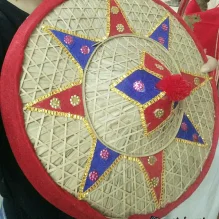
The jaapi or japi is a traditional conical hat from Assam and Odisha, India which is made from tightly woven bamboo and/or cane and tokou paat (Trachycarpus martianus) a large, palm leaf. The word jaapi derives from jaap meaning a bundle of taku leaves.
In the past, plain jaapi were used by ordinary Indians and farmers for protection from the sun, while ornate jaapi were worn as a status symbol by Assamese royalty and nobility. Decorative sorudaya jaapi are made with intricate cloth designs (primarily red, white, green, blue, and black) that are integrated into the weaving. Today, the jaapi is a symbol of Assam. It is worn in a style of Bihu dance, used as protection against the elements, offered as a sign of respect in ceremonies, and placed as a decorative item around the house, especially near the front door as a welcome sign.
Kamakhya Temple :
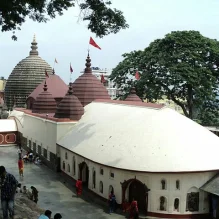
The Kamakhya Temple also known as Kamrup-Kamakhya is a Hindu temple dedicated to the mother goddess Kamakhya. It is one of the oldest of the 51 Shakti Pithas. Situated on the Nilachal Hill in the western part of Guwahati city in Assam, India. It is an important pilgrimage destination for Hindus.
The temple consists of four chambers: garbhagriha and temple consists of three additional chambers. The first to the west is the calanta, a square chamber, followed by pancharatna and natamandira aligned from east to west.
The inner sanctum, the garbhagriha, is below ground level small, dark, and reached by narrow steep stone steps. Inside the cave, there is a sheet of stone that slopes downwards from both sides, meeting in a yoni-like depression. This hollow is constantly filled with water from an underground perennial spring. It is the vulva-shaped depression that is worshiped by the goddess Kamakhya herself and is considered the most important pitha (abode) of the Devi.
Assam State Museum:
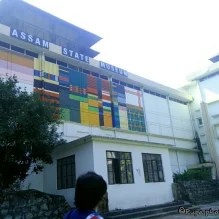
It is located at the southern end of the Dighali Pukhuri tank, which is in the heart of Guwahati City, Assam. The exhibits of the Museum are displayed under different sections, viz., Epigraphy, Sculptures, Miscellaneous, Natural History, art and Crafts, village life, Anthropology & Folk Art & Arms section. The sculptures from the Assam region fall into four principal categories – stone, wood, metal, and terracotta. The collections, which are on display here, are very rare. The photography inside the museum is prohibited unless you get permission.
Srimanta Sankaradeva Kalakshetra:
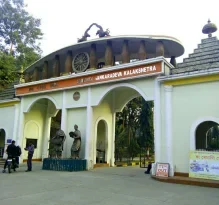
It is commonly known as Kalakshetra which means is a cultural institution in the Panjabari area of Guwahati, Assam, named after the medieval poet-playwright and reformer Srimanta Sankardev. It includes a cultural museum, library, and various facilities for preserving, demonstrating, and performing cultural themes, besides a children’s park.
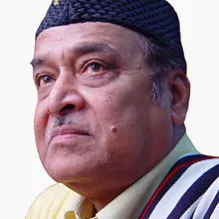
A walk through Heritage Park gives a feeling of contentment and satisfaction. The Kalakshetra quite often holds various workshops of dramaturgy, cinema and other performing as well as visual arts. One of the preservation in Kalakshetra I would like to describe is about Dr. Bhupen Hazarika museum. Dr. Bhupen Hazarika (8 September 1926–5 November 2011) was an Indian playback singer, lyricist, musician, singer, poet, and filmmaker from Assam, widely known as Sudhakantha.
His songs, written and sung mainly in the Assamese language, are marked by humanity and universal brotherhood and have been translated and sung in many languages, most notably in Bengali and Hindi. His songs, based on the themes of communal amity, universal justice, and empathy, have become popular among the people of Assam, besides West Bengal and Bangladesh. He won many prestigious awards for kinds of music, songs, and films.
Snake Pillar:
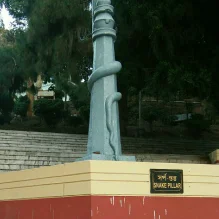
I encountered the snake pillar inside the entrance of Assam State Museum as well as in the Kalakshetra. The 16th Century Snake Pillar of the reign Swargadeo Suhummong which was as a declaration of a treaty between the former and the Misimis would give the Ahoms four basket-fulls of poison in exchange for which the Misimis would be allowed to dwell in the hills. This snake pillar holds a precious history of Assam.
Thank you all for reading…
